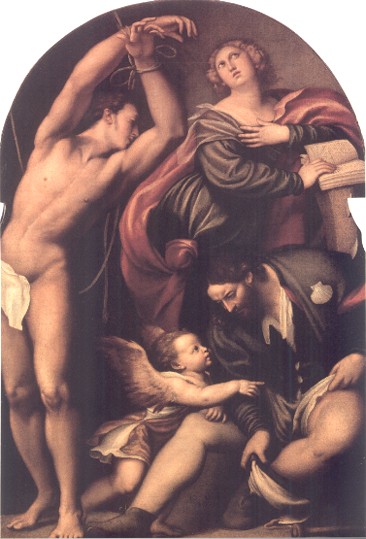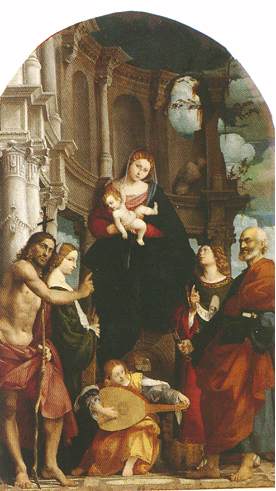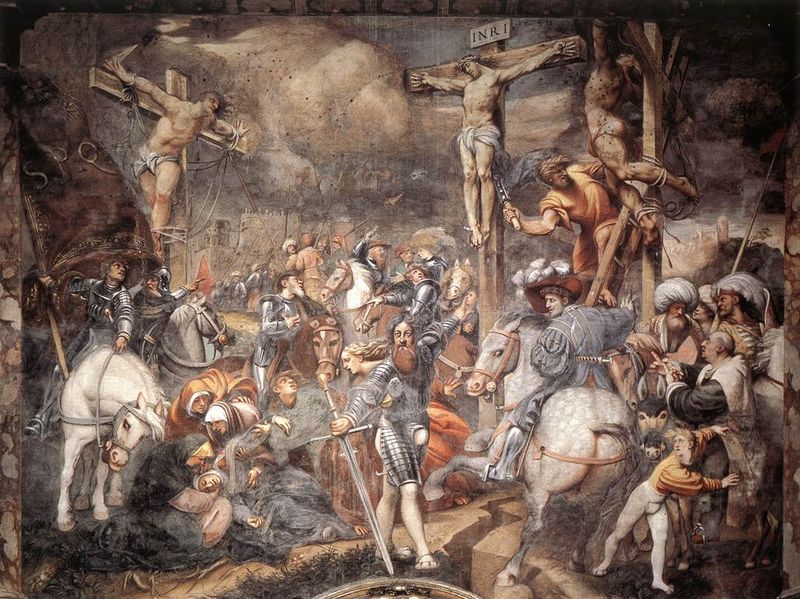Il Pordenone (1483-1539)
Get a II Pordenone Certificate of Authenticity for your painting (COA) for your II Pordenone drawing.
For all your II Pordenone artworks you need a Certificate of Authenticity (COA) in order to sell, to insure or to donate for a tax deduction.
Getting a II Pordenone Certificate of Authenticity (COA) is easy. Just send us photos and dimensions and tell us what you know about the origin or history of your II Pordenone painting or drawing.
If you want to sell your II Pordenone painting or drawing use our selling services. We offer II Pordenone selling help, selling advice, private treaty sales and full brokerage.
We have been authenticating II Pordenone and issuing certificates of authenticity since 2002. We are recognized II Pordenone experts and II Pordenone certified appraisers. We issue COAs and appraisals for all II Pordenone artworks.
Our II Pordenone paintings and drawings authentications are accepted and respected worldwide.
Each COA is backed by in-depth research and analysis authentication reports.
The II Pordenone certificates of authenticity we issue are based on solid, reliable and fully referenced art investigations, authentication research, analytical work and forensic studies.
We are available to examine your II Pordenone painting or drawing anywhere in the world.
You will generally receive your certificates of authenticity and authentication report within two weeks. Some complicated cases with difficult to research II Pordenone paintings or drawings take longer.
Our clients include II Pordenone collectors, investors, tax authorities, insurance adjusters, appraisers, valuers, auctioneers, Federal agencies and many law firms.
We perform Il Pordenone art authentication, appraisal, certificates of authenticity (COA), analysis, research, scientific tests , full art authentications. We will help you sell your Il Pordenone or we will sell it for you.

Il Pordenone, by name of Giovanni Antonio de’ Sacchis, was an Italian painter of the Venetian School, active during the Renaissance. Vasari, his main biographer, identifies him as Giovanni Antonio Licinio.

He was commonly named “Il Pordenone” from having been born in 1483 at Corticelli, a village near Pordenone in Friuli. He ultimately dropped the name of Licinio, having quarrelled with his brothers, one of whom had wounded him in the hand. After this incident, he then called himself Regillo, or De Regillo. Others say he once took up his maternal name of Cuticelli. His signature runs Antonius Portunaensis, or De Portunaonis. He was deemed a cavalier by Charles V.

As a painter, Pordenone was a scholar of Pellegrino da San Daniele but a leading influence on his style was Giorgione. The popular story that he was a fellow pupil with Titian under Giovanni Bellini is false. The district about Pordenone had been somewhat fertile in capable painters, but Pordenone is the best-known, a vigorous chiaroscurist and flesh painter. The 1911 Britannica states that “so far, as mere flesh-painting is concerned, he was barely inferior to Titian in breadth, pulpiness and tone”. The two were rivals for a time, and Licinio would sometimes affect to wear arms while he was painting. He excelled in portraits and was equally at home in fresco and in oil color. He executed many works in Pordenone and elsewhere in Friuli, Cremona, and Venice. At one time, he settled in Piacenza, where one of his most celebrated church pictures, St. Catherine Disputing with the Doctors in Alexandria is located. The figure of St. Paul, in connection with this picture, is his own portrait.

He was invited by Duke Ercole II of Ferrara to court and soon afterwards, he died in Ferrara in 1539, not without suspicion of poison. His later works are comparatively careless and superficial, and generally he is better in male figures than in female. The latter being somewhat too sturdy, and the composition of his subject pictures is scarcely on a level with their other merits. Pordenone appears to have been a vehement self-asserting man, to which his style as a painter corresponds.

Three of his principal pupils were Bernardino Licinio, named Il Sacchiense, his son-in-law Pomponio Amalteo, and Giovanni Maria Calderari.
Partial anthology of works:
- Study of the Martyrdom of Saint Peter Martyr, (1526, John Paul Getty Museum)
- Saint Bonaventure, (National Gallery, London)
- Saint Louis of Toulouse, (National Gallery, London)
- Saints Prosdocimus & St. Peter, (1516, North Carolina Museum of Art, Raleigh).
- Golgotha, (1520-21, fresco, Cathedral of Cremona)
- Madonna and Child Enthroned with Saints, (c. 1525, Parish Church, Susegana, Treviso)
- St. Lorenzo Giustiniani and Other Saints, (1532, originally in S. Maria dell’Orto, now Gallerie dell’Accademia, Venice)
- Madonna and Child Enthroned with Saints, (1525)
- Saint Martin and Saint Christopher, (1528-29, Church of San Rocco, Venice)
- San Lorenzo Giustiniani & Two Friars with Saints, (1532, Galleria dell’Accademia, Florence)
- Saints Sebastian, Roch and Catherine, (1535, Church of San Giovanni Elemosinario, Venice)
- Madonna and Child Enthroned with Saints, (1525, Parish Church, Grandcamp, France)
- The dispute of Saint Catherine with Pagan Philosophers, (Cathedral of Piacenza)
- San Gottardo and Saints Sebastian and Rocco, (Museo Civico d’Arte, Pordenone)
- Saint Catherine and Martyrs, (Museo Civico di Conegliano)
- Drawings from Ambrosiana Library, Milan
- Magi, (Treviso Cathedral)

Still wondering about an Italian painting in your family collection? Contact us…it could be by Il Pordenone.
Reviews
1,217 global ratings
5 Star
4 Star
3 Star
2 Star
1 Star
Your evaluation is very important to us. Thank you.
